We have decided to add historical summaries to the news from time to time. For those who did not know, it will be useful to know. For those who knew, it will be useful to refresh your memory. The historians on our staff insist that to understand recent history, you need to know earlier events. We can’t argue with them, nor do we want to, because we agree with them completely.
Sincerely, Truth of the Middle East Editorial Team
A Simple Story.
The seizure of the US Embassy in Iran: what it was like
On November 4, 1979, a group of students claiming to be followers of Ayatollah Ruhollah Khomeini broke into the U.S. Embassy in Tehran and took dozens of American diplomats prisoner.
This attack became a major diplomatic crisis that still reverberates today. The students, backed by a large angry crowd, seized control of the embassy.
They claimed that they did not support the fact that American clinics had accepted the former leader of Iran, Shah Mohammad Reza Pahlavi, for treatment. On November 4, 1979, a group of students claiming to be supporters of Ayatollah Ruhollah Khomeini stormed the U.S. Embassy in Tehran and took dozens of American diplomats hostage in a dramatic incident that became a major diplomatic crisis. The consequences of that attack are still being felt today, more than 40 years later.
The students, supported by a large angry crowd, seized control of the US embassy and said they did not agree with the fact that an American clinic had taken former Iranian leader Shah Mohammad Reza Pahlavi, who was suffering from cancer, for treatment. The events took place after the Iranian Revolution. The release of 52 of the American hostages is scheduled for 444 days from now.
This confrontation caused considerable damage to the administration of President Jimmy Carter, and diplomatic relations between the U.S. and Iran, already strained by the events, have not yet been restored to their previous level.
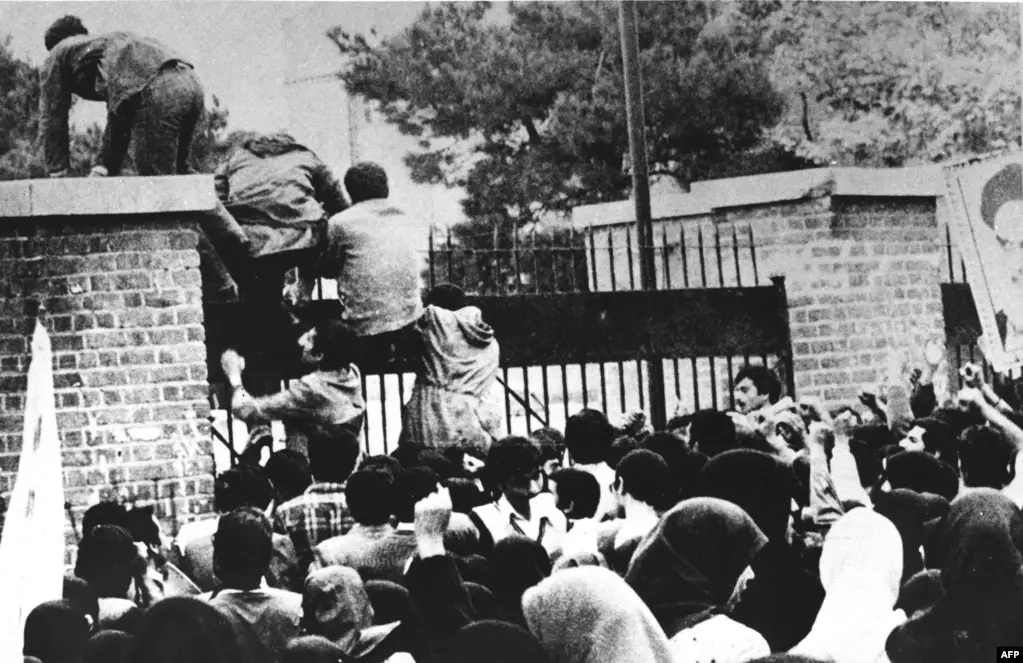
1. On November 4, 1979, at 10:30 a.m. local time, several hundred young Iranians climbed over the fence of the U.S. Embassy. They were supported by a crowd of thousands. The young men who entered the embassy blindfolded and handcuffed dozens of American citizens who were inside the building. A few months earlier, protesters had seized the U.S. mission in Tehran and taken an American Marine hostage on February 14. However, order was restored hours later.
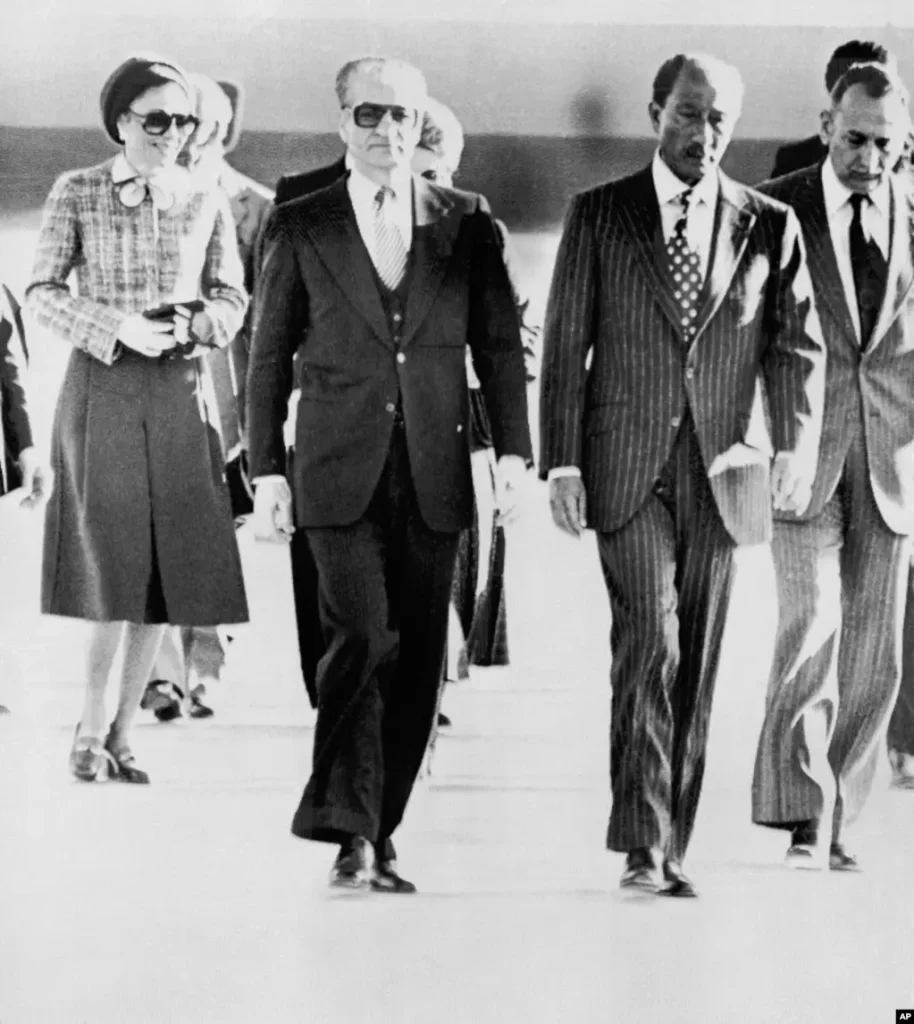
2. On January 16, 1979, the Iranian monarch, Shah Mohammad Reza Pahlavi, left his country and went first to Egypt, where he was received by Egyptian President Anwar Sadat. Iranian students were angry that President Jimmy Carter had allowed the Shah to visit New York for medical treatment. The Shah then fled Tehran amid demonstrations against his rule, and his troops opened fire on the demonstrators.
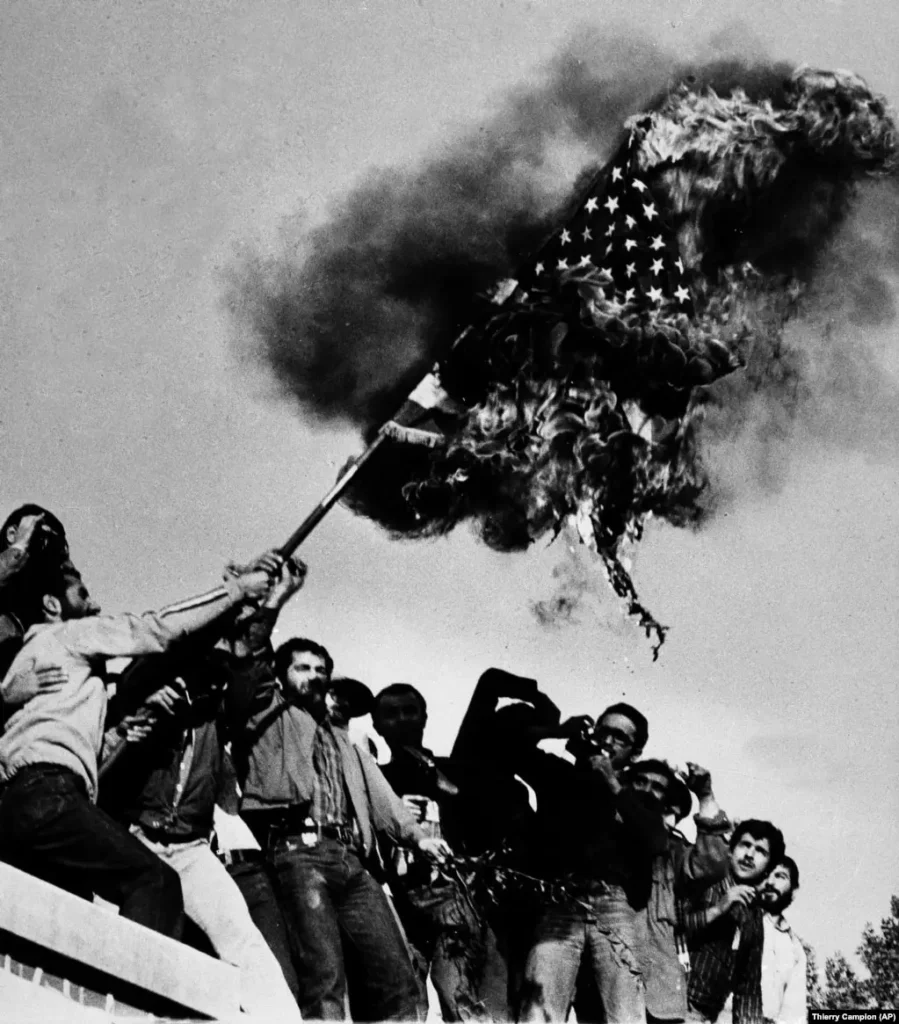
3. Demonstrators set fire to the American flag in front of the U.S. Embassy in Tehran, November 9, 1979. A few weeks after the Shah’s departure, Ayatollah Ruhollah Khomeini returned to Iran from his 14-year exile in France. He was greeted by cheering crowds, and in a referendum held in March 1979, Iranian citizens supported the transition from a secular monarchy to an Islamic government.
All over Iran, American flags and effigies of Uncle Sam were burned, shouting, “Death to America!”
If the captured embassy staff asked when they would be released, the students replied, “When your President Carter gives us the Shah.”

4. During the hostage crisis in the United States, anger and frustration grew. Anti-Iranian rallies were held in the country. One of them, held in Washington, D.C., on November 9, 1979, is shown in this photo.
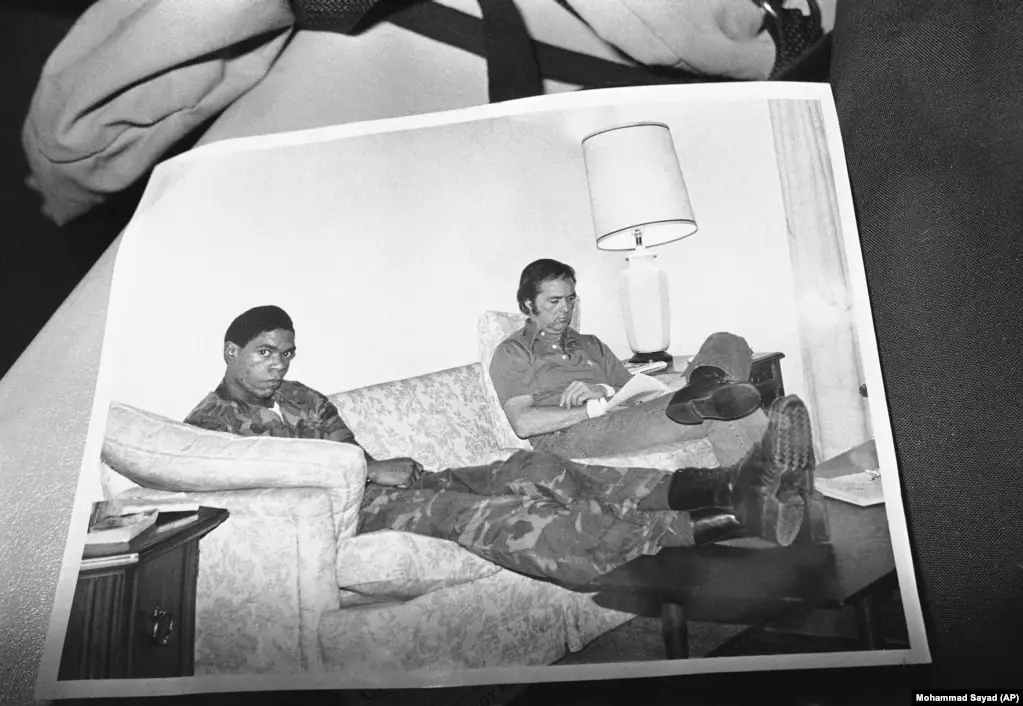
5. The Iranians who captured the diplomats tried to show that the hostages were comfortable. This photo of an embassy official and a U.S. Marine was presented at a press conference in Tehran on November 9, 1979. The outside world had almost no contact with the hostages, who were actually being beaten and subjected to mock executions. Two Americans attempted suicide.
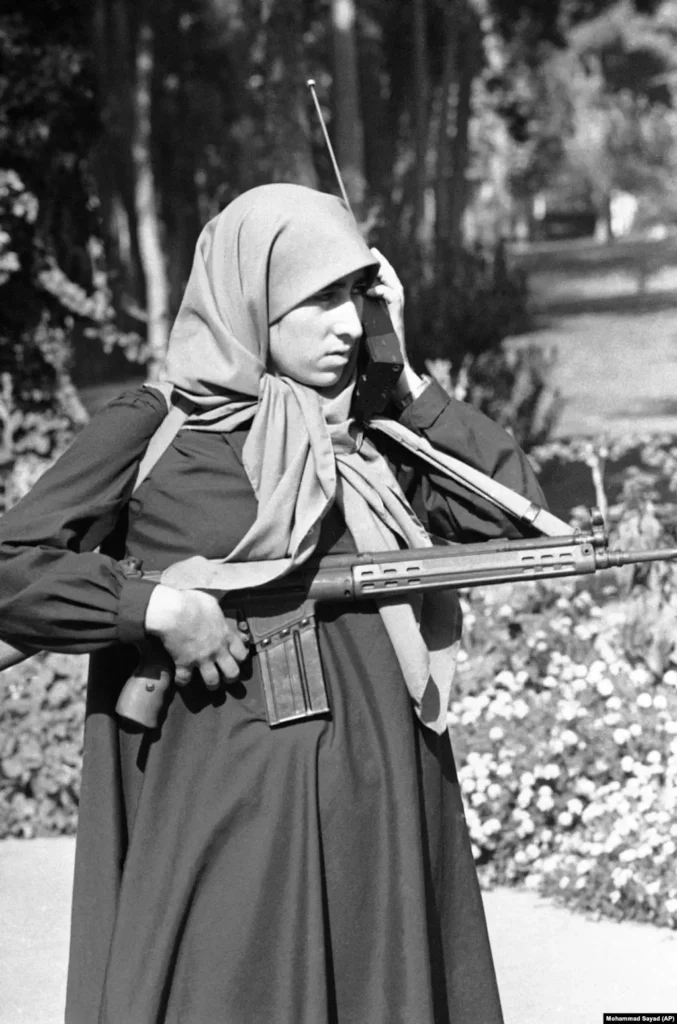
6. An Iranian student guards the embassy on November 10, 1979. Thousands of demonstrators gathered in front of the building shouting anti-American slogans. Later, the leaders of the hostage-taking group said they did not expect to hold the building for more than a few hours, but after Ayatollah Khomeini gave his approval, they revised their plans.
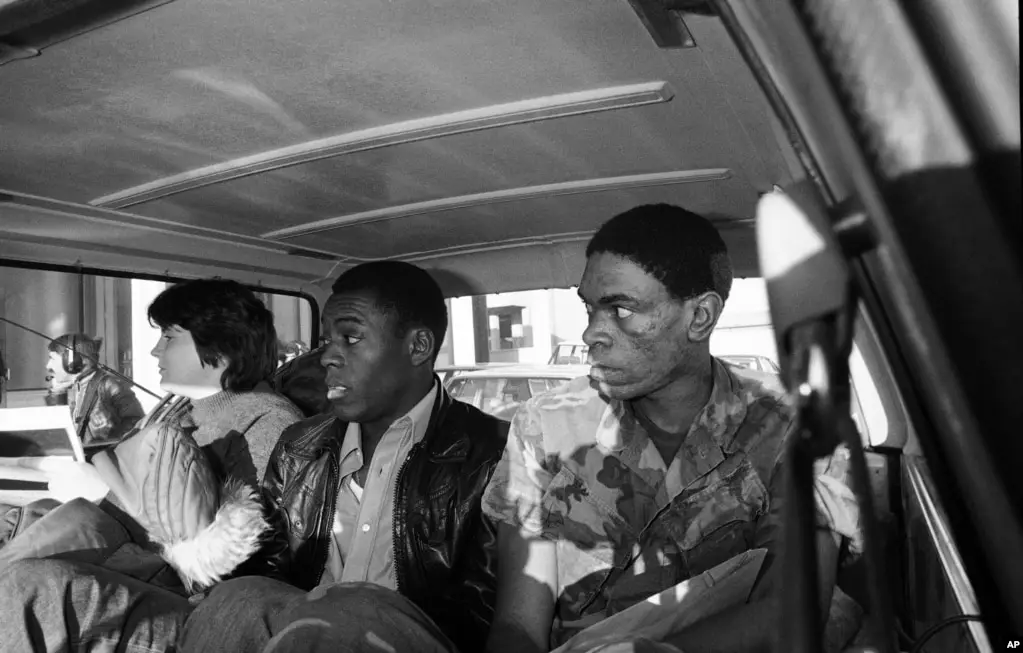
7. On November 19, 1979, three hostages released from the U.S. Embassy were escorted to the airport after a press conference, from left to right, Katie Gross (22 years old) of Cambridge Springs, Pennsylvania; Marine Ladell Maples (23 years old) of Arkansas; and Marine William Quarles (23 years old) of Washington, DC.
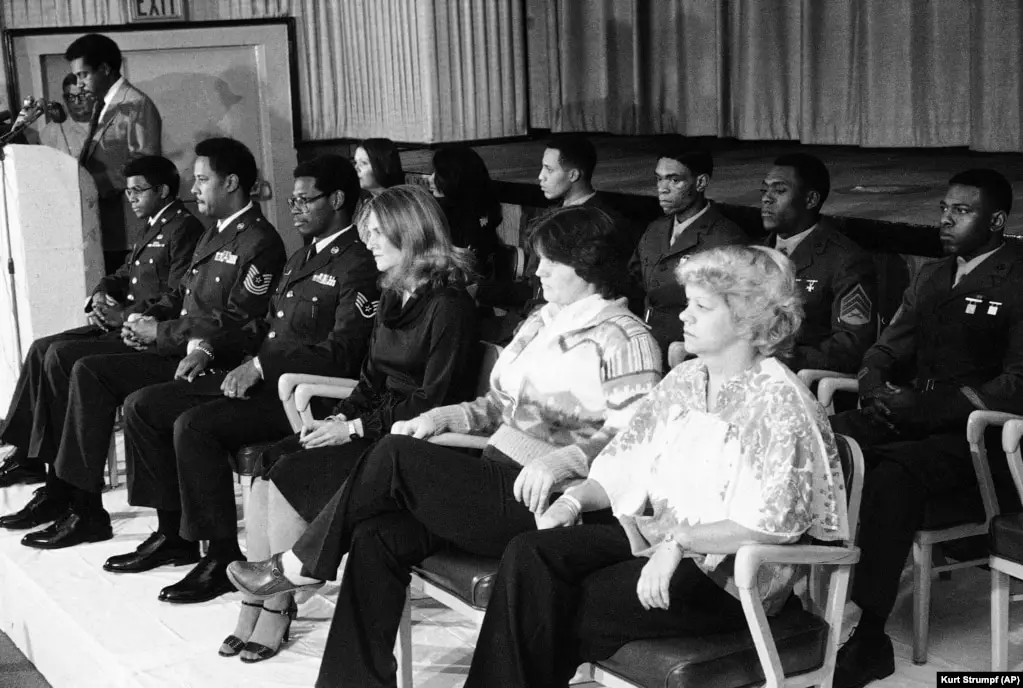
8. On November 21, 1979, thirteen freed Americans were brought by journalists to a U.S. military base in West Germany. Lloyd Rollins read a statement from their former captors at the podium, with Terry Robinson, Joseph Vincent, James Hughes, Joan Walsh, Katie Gross, and Ann Johnson sitting in the front row. Seated in the second row from left to right were Terry Redford, Elizabeth Montagne, Wesley Williams, William Quarles, Ladell Maple, and David Walker.
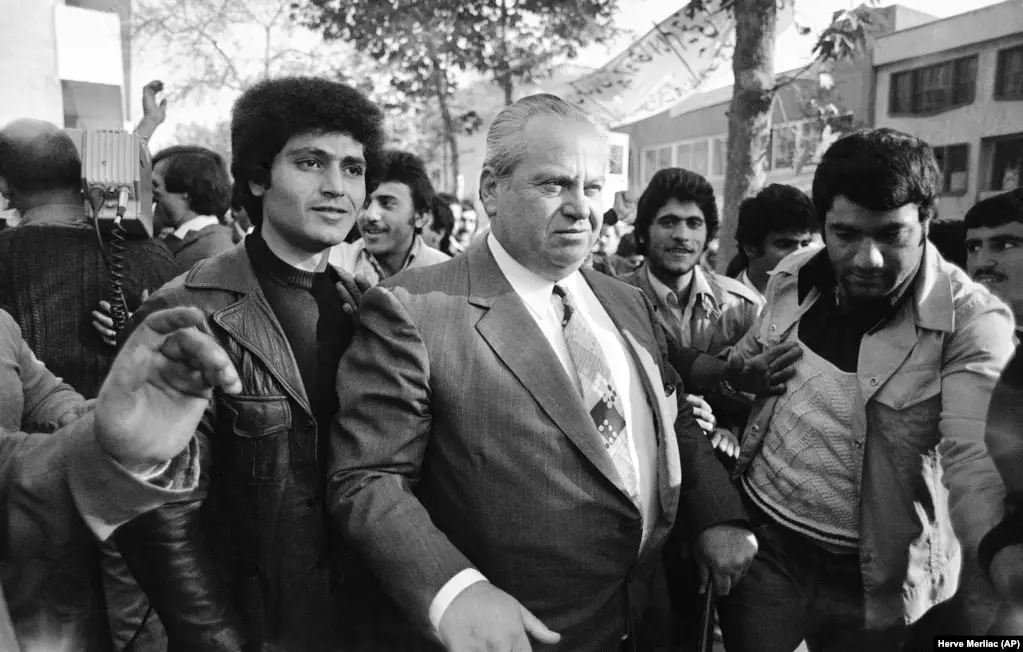
9. Efforts by the International Red Cross to examine the detainees were unsuccessful, as a representative of the organization was allowed only a two-hour meeting with the hijacker on November 24, 1979, and was denied access to the detainees. UN representatives were also denied entry.
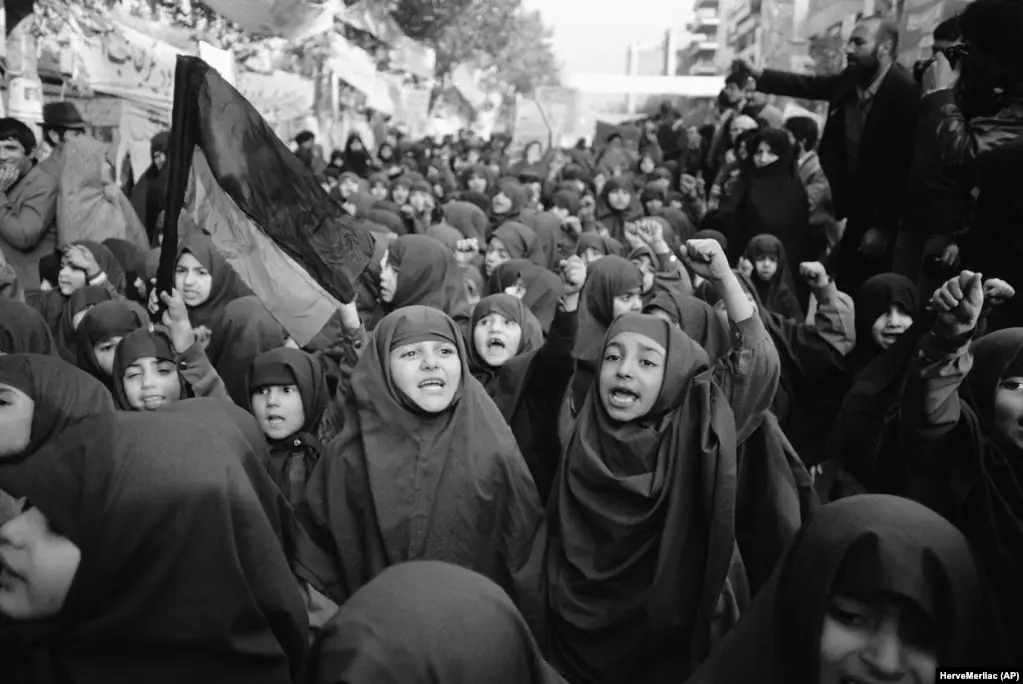
10. Orphaned Iranian girls demonstrated at the Embassy on November 27, 1979, demanding that the Shah be returned to his native country for trial.
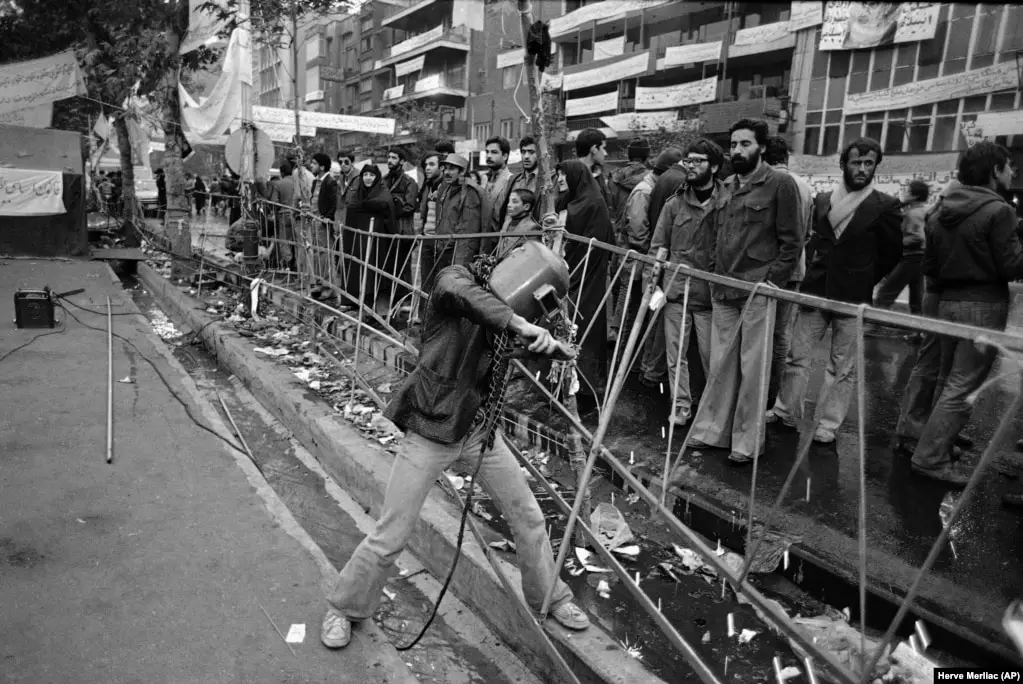
11. To contain the growing number of anti-American demonstrators, a metal fence was installed at the entrance to the embassy. The photo shows an anti-American demonstration on March 29, 1979, when the Iranian people were celebrating the Tasua festival.

12. U.S. citizens showed their support for Iranian students. Two Americans, Carol Downer of Los Angeles and Rebecca Choker of Florida, stood in front of the U.S. Embassy with a sign that read, “Death to the Shah! They were joined by other Americans who wanted to show their support. December 15, 1979.

13.Iranians stood in the rain to express their support for the students who were holding hostages. On December 15, it was announced that Shah was leaving for Panama.

14. On Christmas Eve 1979, hundreds of postcards were sent by sympathetic Americans to the American hostages in Iran. The Iranian authorities promised to deliver the postcards to the hostages after inspection. But they never did.
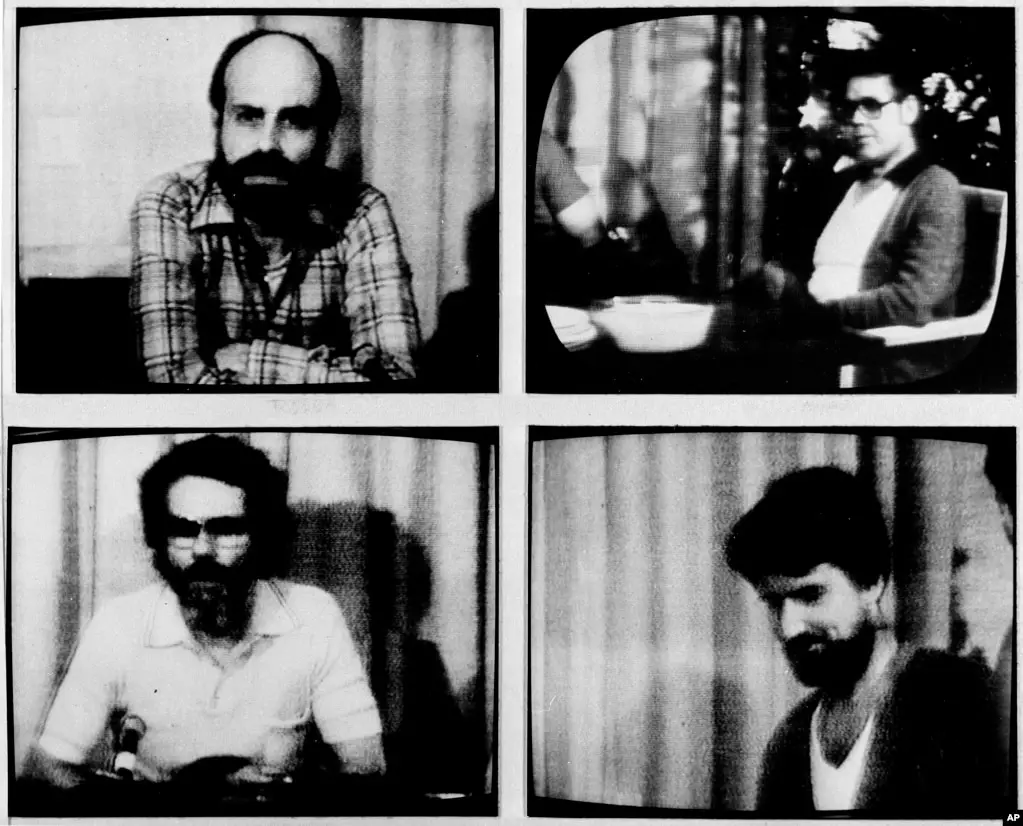
15. In the second year of their captivity, the American hostages were finally allowed to send letters to their families. These letters were broadcast on American television in December 1980, along with photos of the captives’ statements. From left to right: Barry Rosen, New York; Bert Moore, Ohio; William Royer Jr., Texas; and John Graves, Virginia.
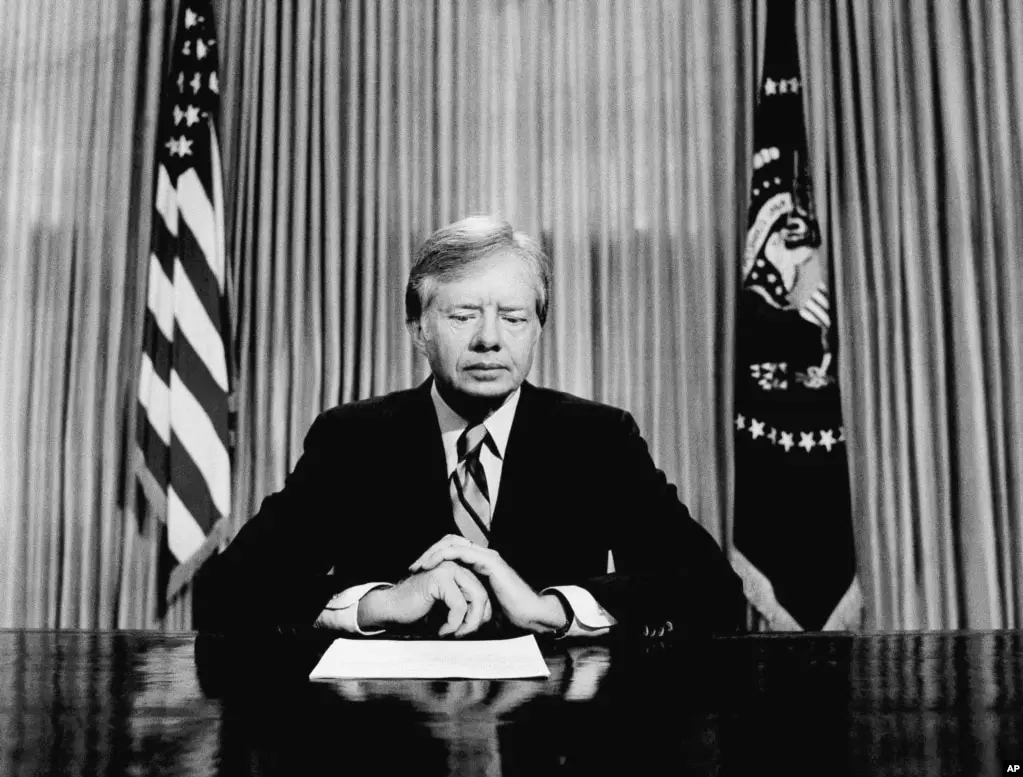
16. President Jimmy Carter prepared for a televised address from the White House on April 25, 1980. In it, he admitted that his decision to launch a rescue mission in Iran had been a failure and that Operation Eagle Claw had to be abandoned. As a result, eight American servicemen lost their lives.

17. The wreckage of a burned-out American C-130 Hercules cargo plane is inspected by Iranian troops in the Dasht-e Kavir desert, some 500 kilometers from Tehran, on April 26, 1980. An RH-53 helicopter collided with the plane during the attempt to free the American hostages. Mechanical problems and a sandstorm hampered the mission, and a U.S. commander advised Carter to abort. The accident happened after the abort order was given. The helicopter’s rotor churned up sand, blocking visibility. Carter put much of the blame for his loss in the 1980 presidential election on his failure to free the hostages.
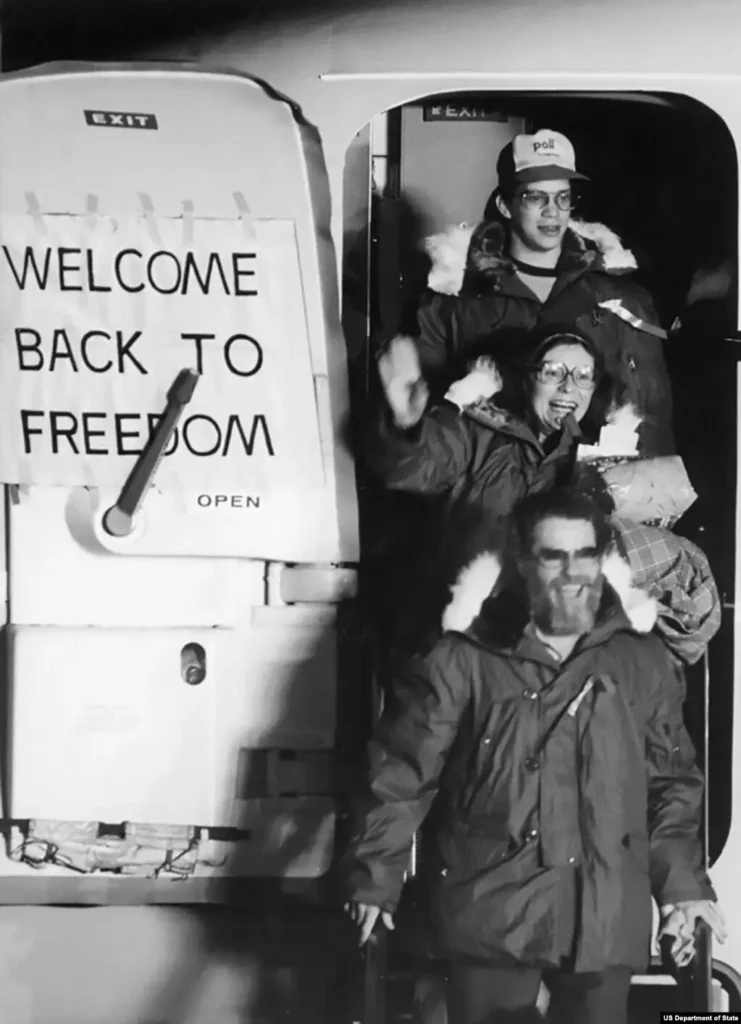
18. After a difficult negotiation process facilitated by Algeria, 52 hostages were released and arrived in Wiesbaden, West Germany, on January 20, 1981, minutes after Ronald Reagan became President of the United States in 1980. During the year, 14 more hostages were released, including one for medical reasons.
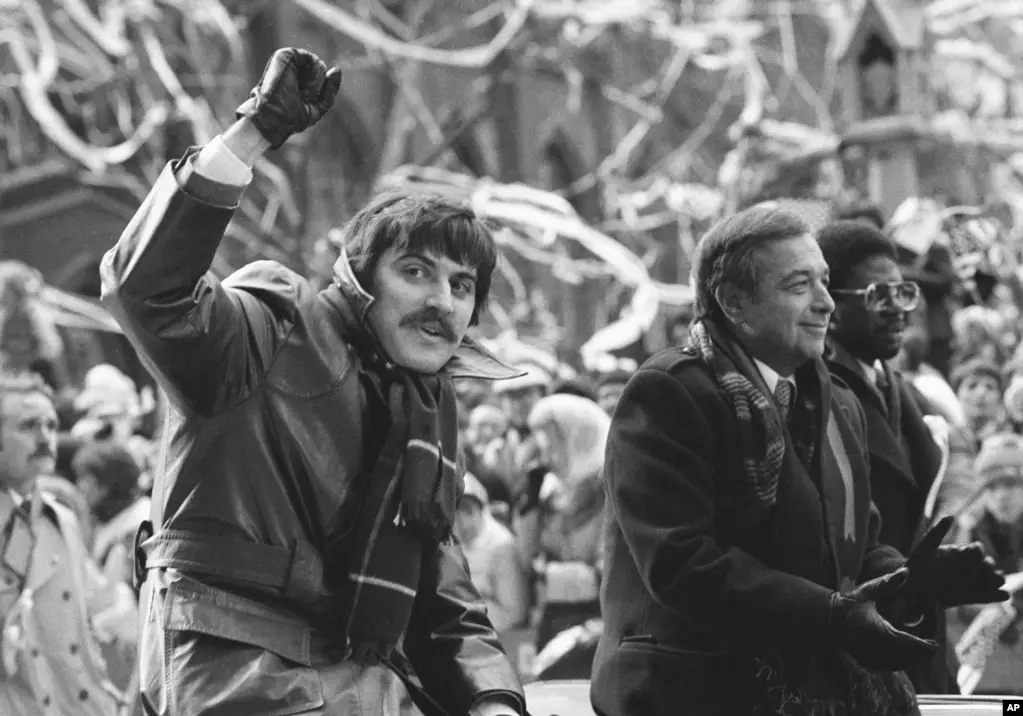
19. Alan Golaczynski, a former hostage from Maryland, waves during a parade in Manhattan celebrating the return of the American citizens. January 30, 1981.
The agreement that led to the release of the captives allowed for the unfreezing of $7.9 billion in Iranian assets overseas. The prisoners were not allowed to sue Iran, but in 2015 the U.S. government paid them $4.4 million each. The money came from an $8.9 billion fine imposed on the French bank BNP Paribas for violating economic sanctions against Iran.
We express our great gratitude to Radio Liberty website for the selected material.

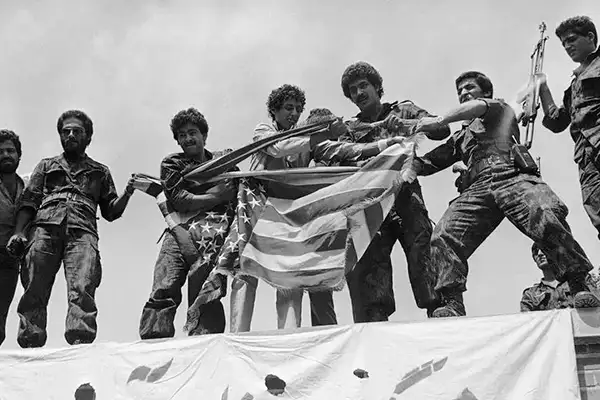



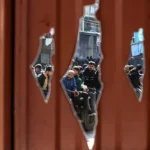

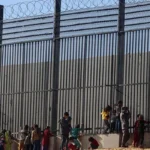
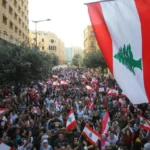
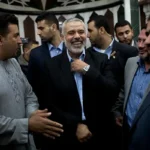
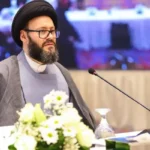
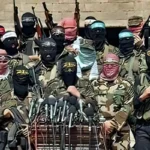


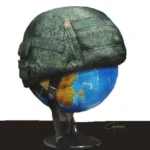
Leave a Reply